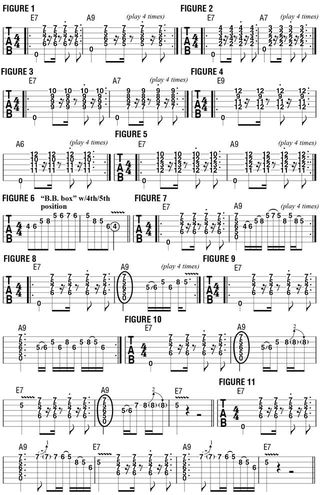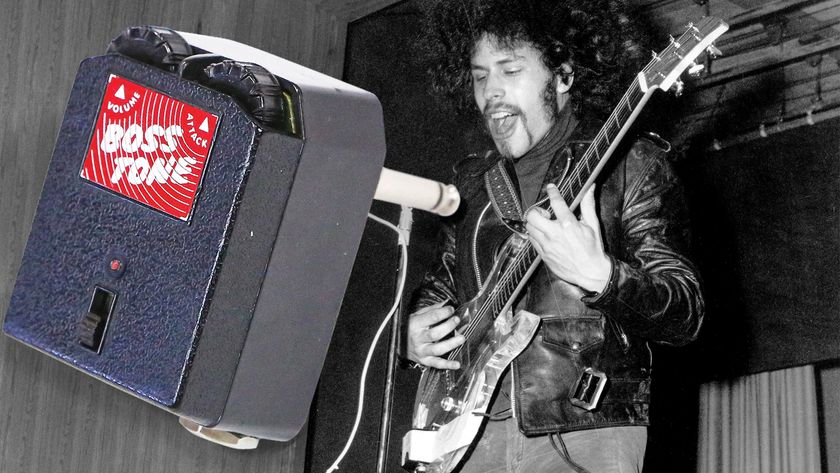Improvising on a I-IV Chord Vamp

An element of endless fascination and discovery in developing one’s improvisational skills on the guitar is the many ways in which to negotiate chordal resolutions.
Regardless of the style of music you’re playing, the task of moving through chord progressions and harmonic resolutions is always at the fore. As a soloist, one always has the option of referencing, or “highlighting,” those resolutions within a lead melody.
The simplest form of chordal resolution occurs when moving back and forth between two chords, what’s known as a two-chord vamp, such as when switching from the I (one) chord of a particular key to the IV (four) chord and back.
With this short, simple progression, you have the option of setting up the move from I to IV by referencing the IV chord slightly ahead of time; this is known as anticipating. The same is true when moving back to the I chord. An additional twist on the guitar is that the same voicings can be played on different string groups in different locations of the fretboard.
This is where many players get hung up; they may feel comfortable and familiar with playing in one specific position but will get lost when moving to a different string group and fretboard region. This month’s column will get us started on addressing this focus of study. FIGURE 1 illustrates a I-IV vamp in the key of E, played in fifth position, with one bar of E7, the “one” chord, followed by one bar of A9, the “four” chord.
In this case I’ve chosen to use an A9 voicing instead of A7, by retaining the E7’s high B note (first string, seventh fret) and using it as a common tone. Practice playing this vamp in the syncopated rhythm shown. Once you have it down, we can start looking at ways to interweave lead lines within the chord pattern. A great way to expand one’s fretboard knowledge is to take a simple progression like this and play it in as many different places and inversions as possible, then try adding solo lines in each of the various positions.
Eventually, you’ll want to be able to do the same thing with other string groups and keys. Before doing this, let’s first explore moving our I-IV vamp to other positions and inversions/voicings on the top four strings, as shown in FIGURES 2–5. If we go back to our initial I-IV vamp, we can use a pattern of notes known as the “B.B. box,” named after blues great B.B. King, with which to create single-note lines.
FIGURE 6 illustrates the B.B. box, as played in the key of E in fourth/fifth position, and FIGURE 7 offers an example of a great way to get started learning how to intertwine rhythm and lead playing. FIGURES 8–11 present additional examples of melodic melodic line variations. Next month, we’ll explore taking the same approach in other areas of the fretboard.

Get The Pick Newsletter
All the latest guitar news, interviews, lessons, reviews, deals and more, direct to your inbox!
Guitar World Associate Editor Andy Aledort is recognized worldwide for his vast contributions to guitar instruction, via his many best-selling instructional DVDs, transcription books and online lessons. Andy is a regular contributor to Guitar World and Truefire, and has toured with Dickey Betts of the Allman Brothers, as well as participating in several Jimi Hendrix Tribute Tours.









![Joe Bonamassa [left] wears a deep blue suit and polka-dotted shirt and plays his green refin Strat; the late Irish blues legend Rory Gallagher [right] screams and inflicts some punishment on his heavily worn number one Stratocaster.](https://cdn.mos.cms.futurecdn.net/cw28h7UBcTVfTLs7p7eiLe-840-80.jpg)



